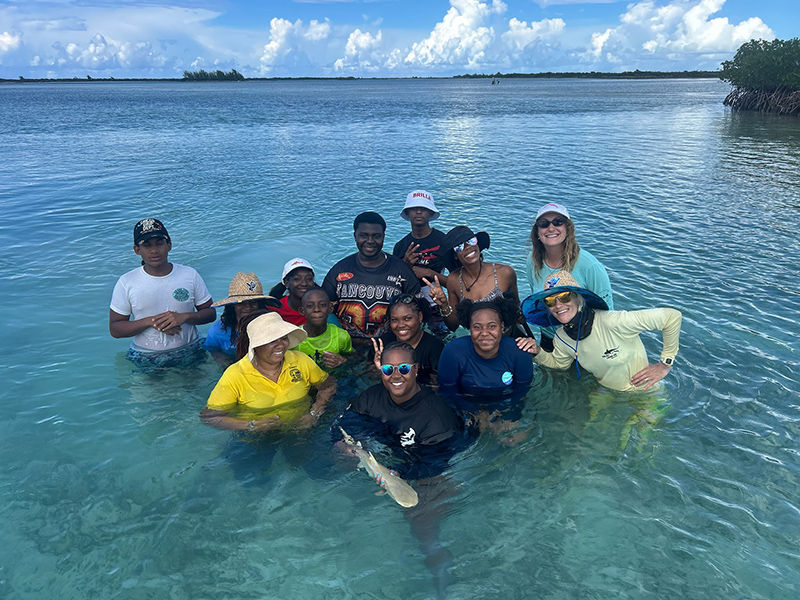October Elasmobranch of the Month: Atlantic Sharpnose Shark
- Sharks4Kids

- Nov 1, 2022
- 2 min read
Author: Linda Weiss
Atlantic Sharpnose Shark
Rhizoprionodon terraenovae
Key Features/Appearance
The Atlantic sharpnose, shark is gray to olive-gray in color on top and cream to white underneath. Adults have white spots on their top-side. The body shape is slender with a long, rounded snout, from which its name is derived. The first dorsal fin begins behind the pectoral fins and the second dorsal fin starts at or behind the middle of the anal fins. There is not an interdorsal ridge. The caudal fin is lobed with the upper lobe being larger than the lower lobe. In juveniles the dorsal and caudal fins are edged in black. Both the upper and lower jaws hold 24 - 25 rows of teeth that are triangular in shape. The Atlantic sharpnose is a small shark, reaching a maximum known length of 110 cm (3.6 ft).

Habitat and Distribution
The Atlantic sharpnose shark resides in the Northwest and Western Central Atlantic Ocean, North from New Brunswick, Canada, along the eastern United States, to the Yucatan Peninsula in the south, including the Gulf of Mexico and along the eastern coast of Brazil. In the United States it is seldom observed north of North Carolina. They are found at depths between the surface and 280 m (920 feet) and are most often located in less than 10 m (32 feet). Their preferred habitat is warm-temperate and tropical waters the surf zone.
Diet
The Atlantic sharpnose’s diet consists of shrimp, crabs, worms, mollusks and bony fish such as toadfish, filefish, silversides, wrasses and eels.

Reproduction
Atlantic sharpnose shark reproduction is viviparous, where embryos develop inside the female nourished by a yolk sac, followed by a yolk sac placenta. After an 11-month gestation period approximately 4-7 live pups are born per litter. The litter size appears related to the mother’s physical size. Each pup measures approximately 30-35 cm (12-13.8 inches) long. The pups grow an average of 5 cm (2 inches) per month for the first three months of their lives.
Status
The IUCN Red List of Threatened Species currently lists the Atlantic sharpnose shark as Least Concerned with an increasing population trend.
Threats
The Atlantic sharpnose shark’s natural predators include larger sharks. They are targeted by the commercial fishing industry for their meat and to be used as bait for larger sharks. Like many other shark species, they are also caught as bycatch in shrimp trawlers.
References
Florida Fish and Wildlife Conservation Commission
Florida Museum of Natural History
Marine Bio
NOAA Fisheries
Sharkwater.com
Sharks and Ray.com
The IUCN Red List of Threatened Species
Carlson, J., Charvet, P., Blanco-Parra, MP, Briones Bell-lloch, A., Cardenosa, D., Derrick, D., Espinoza, E., Morales-Saldaña, J.M., Naranjo-Elizondo, B., Pacoureau, N., Pérez Jiménez, J.C., Schneider, E.V.C., Simpson, N.J. & Talwar, B.S. 2021. Rhizoprionodon terraenovae. The IUCN Red List of Threatened Species 2021: e.T39382A124408927. https://dx.doi.org/10.2305/IUCN.UK.2021-1.RLTS.T39382A124408927.en. Accessed on 3 October 2022.





















